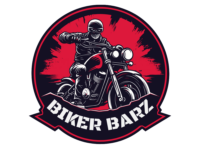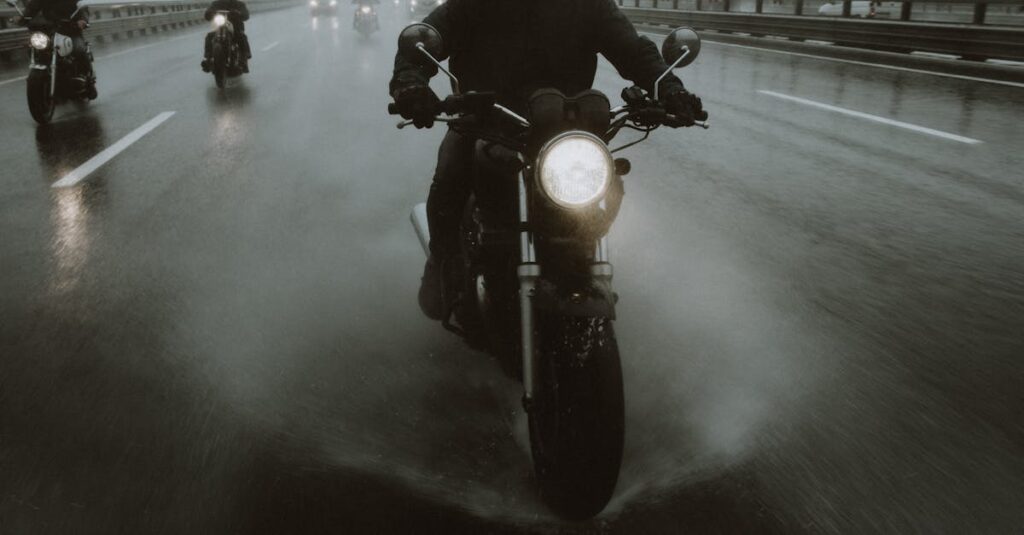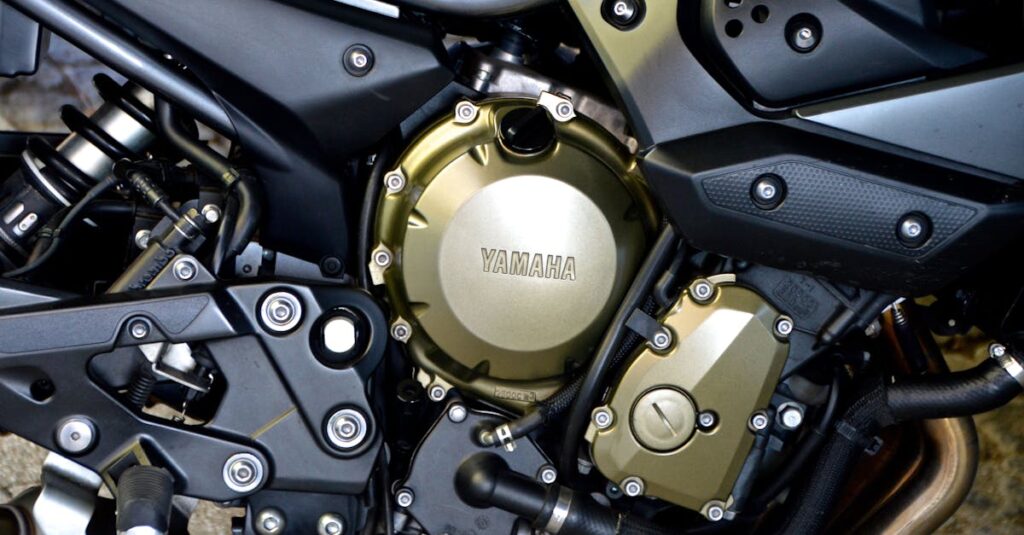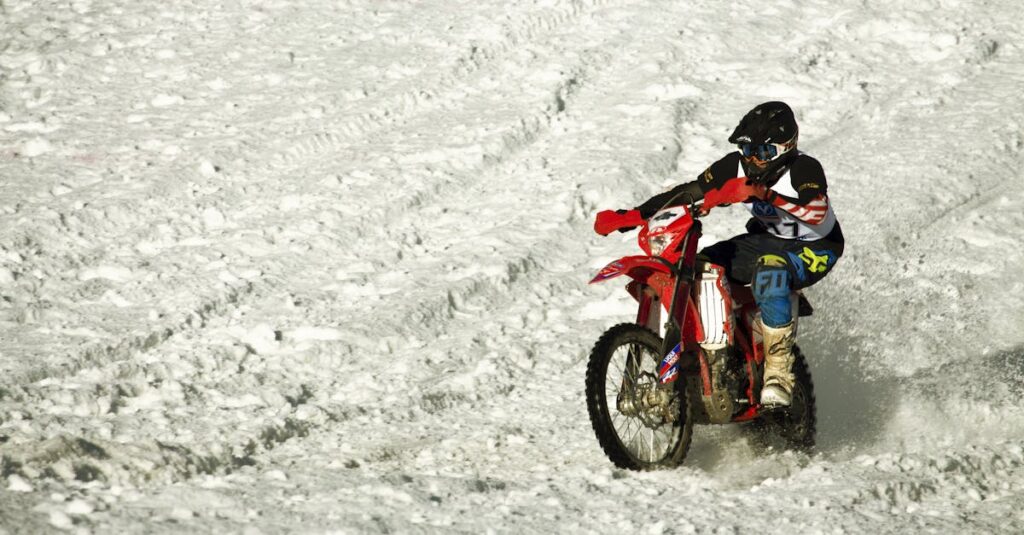Riding a motorcycle in the rain without proper gear is like jumping into a pool fully clothed – uncomfortable and potentially dangerous. While many riders pack up their bikes at the first sign of dark clouds smart motorcyclists know that the right rain gear can transform a wet ride from a miserable experience into an enjoyable adventure.
Motorcycle rain gear has evolved significantly from the days of flimsy plastic ponchos that would tear apart faster than a paper towel in a hurricane. Today’s high-tech waterproof gear combines style comfort and functionality to keep riders dry and safe in even the most challenging weather conditions. From one-piece suits to modular options there’s a solution for every rider’s needs and budget.
Rain Gear For Motorcycle
Motorcycle rain gear protects riders from dangerous weather conditions that affect visibility, control, and safety. Riding in wet conditions creates unique challenges, including reduced traction, decreased visibility, and potential hydroplaning situations.
Proper rain equipment maintains body temperature regulation by keeping riders dry and preventing hypothermia. Cold, wet conditions lower body temperature rapidly, causing reduced reaction times and impaired judgment during motorcycle operation.
Quality motorcycle rain gear enhances visibility in three critical ways:
- Reflective materials increase rider visibility to other vehicles
- Water-repellent face shields improve forward vision
- Anti-fog treatments prevent visor condensation
Road safety increases significantly with specialized rain gear features:
- Secure grip panels on gloves maintain handlebar control
- Non-slip boot covers prevent foot slippage on wet pegs
- Reinforced seams prevent water penetration at key points
Here’s how rain gear impacts riding performance:
| Factor | Without Rain Gear | With Rain Gear |
|---|---|---|
| Visibility Distance | 40-50 feet | 100+ feet |
| Reaction Time | Delayed by 1.5 seconds | Normal response |
| Riding Duration | 30-45 minutes | 3-4 hours |
| Body Temperature | Drops 2-3°F per hour | Maintains normal range |
Professional-grade motorcycle rain gear includes additional protective elements:
- Abrasion-resistant overlays in impact zones
- Waterproof zippers with storm flaps
- Adjustable closures at wrists and ankles
- Ventilation systems for temperature control
Riding comfort extends beyond basic weather protection through technical features like moisture-wicking inner layers and ergonomic design elements that accommodate riding positions.
Types of Motorcycle Rain Gear
Motorcycle rain gear comes in three primary configurations, each offering distinct advantages for different riding situations. The selection between these options depends on factors like riding frequency, weather conditions, and personal preferences.
One-Piece Rain Suits
One-piece rain suits provide complete coverage in a single, unified garment that protects riders from head to ankle. These suits feature full-length zippers extending from neck to ankle for easy entry. Premium models incorporate ventilation panels, reflective strips, heat-resistant panels on inner legs, and elasticized cuffs at wrists and ankles. Storage options include waterproof pockets for essential items like phones or wallets. The integrated design eliminates potential water entry points at the waist, making these suits particularly effective in heavy downpours.
Two-Piece Rain Suits
Two-piece rain suits consist of separate jacket and pants components that zip or snap together at the waist. These suits offer enhanced versatility as riders can wear either piece independently based on weather conditions. The separable design allows for easier storage in saddlebags or backpacks when partially unused. Most models feature overlapping waist sections with secure fasteners to prevent water penetration. Additional features include adjustable waist straps, reinforced seat areas, and boot gaiters to prevent water from running into footwear.
Rain Jackets and Pants
Individual rain jackets and pants provide maximum flexibility for varying weather conditions. Rain jackets incorporate features like storm flaps over zippers, adjustable hoods that fit under helmets, and waterproof chest vents. The pants include full-length side zippers for fitting over boots, reinforced knee panels, and adjustable waist systems. High-end models use multi-layer waterproof breathable materials with sealed seams. These separate pieces allow riders to mix different sizes between top and bottom for optimal fit.
Key Features to Look for in Motorcycle Rain Gear
Selecting motorcycle rain gear requires attention to specific features that enhance protection comfort during wet weather rides. Critical elements include waterproof materials visibility enhancements ventilation systems.
Waterproof Materials
Modern motorcycle rain gear incorporates advanced waterproof materials that create an impenetrable barrier against rain. Quality rain gear uses materials like Gore-Tex PTFE membranes thermally sealed seams. Common waterproofing specifications include:
| Material Type | Water Resistance Rating | Durability Rating |
|---|---|---|
| Gore-Tex | 28,000mm | 9/10 |
| Polyurethane | 20,000mm | 7/10 |
| DWR Coated Nylon | 15,000mm | 6/10 |
Premium rain gear features triple-layer construction with an outer shell water-resistant membrane inner comfort liner. Reinforced areas at high-wear points prevent water penetration at stress zones elbows knees shoulders.
Visibility Elements
Motorcycle rain gear integrates multiple visibility features to enhance rider safety in low-light wet conditions. Strategic placement of reflective panels creates 360-degree visibility:
- 3M Scotchlite™ reflective strips on chest back shoulders
- Fluorescent panels on arms legs torso
- Retroreflective piping along seams zippers
- High-visibility color options: yellow orange lime green
These elements reflect vehicle headlights at distances up to 500 feet creating clear rider visibility in dark rainy conditions.
Ventilation Options
Effective ventilation systems prevent overheating moisture buildup inside rain gear. Key ventilation features include:
- Zippered chest vents for direct airflow
- Mesh-lined pit zips releasing excess heat
- Back exhaust vents promoting air circulation
- Adjustable cuff wrist openings
- Perforated panels in high-heat areas
The combination of these vents creates a microclimate control system maintaining comfortable riding temperatures between 60-80°F while keeping rain out.
Best Practices for Storing Rain Gear
Proper storage extends motorcycle rain gear lifespan by preventing material degradation, mold growth, and seal damage.
Before Storage:
- Rinse gear with clean water to remove dirt, road grime or salt deposits
- Dry completely in a well ventilated area away from direct sunlight
- Check all seams, zippers and fasteners for damage
- Apply zipper lubricant to maintain smooth operation
- Clean reflective surfaces with a microfiber cloth
Storage Location Requirements:
- Climate controlled environment between 60-75°F
- Low humidity levels under 50%
- No direct sunlight exposure
- Away from heat sources or vents
- Protected from dust and debris
Storage Methods:
- Hang one piece suits on padded hangers to maintain shape
- Store two piece sets unfolded to prevent permanent creases
- Use breathable garment bags for protection
- Keep boots upright with boot trees inserted
- Place gloves flat or on glove forms
- Compress gear in tight spaces
- Store while damp or dirty
- Use plastic bags that trap moisture
- Leave in extreme temperatures
- Stack heavy items on top
- Material elasticity retention
- Waterproof coating protection
- Seam tape adhesion
- Reflective element preservation
- Ventilation system maintenance
| Storage Factor | Optimal Range |
|---|---|
| Temperature | 60-75°F |
| Humidity | 30-50% |
| Storage Space | 2-3 ft clearance |
| Cleaning Frequency | Every 5-10 uses |
How to Properly Size Your Rain Gear
Accurate measurements form the foundation of properly fitted motorcycle rain gear. Here’s a systematic approach to sizing:
Upper Body Measurements
- Chest: Measure around the fullest part while wearing regular riding attire
- Shoulders: Measure across the widest point from shoulder to shoulder
- Sleeve length: Measure from shoulder seam to wrist while arms hang naturally
- Torso: Measure from base of neck to natural waistline
Lower Body Measurements
- Waist: Measure around natural waistline above hip bones
- Inseam: Measure from crotch to ankle while standing straight
- Hip: Measure around the fullest part of hips
- Thigh: Measure circumference at widest point
Sizing Considerations
- Add 1-2 inches to measurements when wearing thick base layers
- Allow room for protective gear like armor padding
- Consider manufacturer specific size charts for accurate fit
- Test range of motion in riding position
Fit Indicators
- Sleeves extend to wrists in riding position
- Pants reach ankle bones without bunching
- Collar sits comfortably at neck base
- Jacket covers lower back in forward lean
- Minimal material bunching at joints
- Reach forward to handlebars
- Swing legs over seat height
- Rotate shoulders fully
- Bend knees to footpeg position
- Crouch to simulate tucked position
This sizing approach ensures rain gear performs optimally by maintaining waterproof seals while allowing unrestricted movement during rides.
Tips for Riding in the Rain Safely
Reducing speed by 30% in wet conditions creates a safer stopping distance. Maintaining a 4-second following distance from other vehicles prevents sudden braking scenarios. Smooth inputs on controls minimize the risk of losing traction on wet surfaces.
Scanning the road surface helps identify potential hazards:
- Avoid painted lines metal surfaces manhole covers during turns
- Stay clear of puddles that mask potholes road debris
- Position tires on the driest part of the lane where cars leave wheel tracks
Proper braking technique enhances control in wet conditions:
- Apply brakes gradually using 70% rear 30% front brake ratio
- Brake in straight lines before entering curves
- Release brakes smoothly to prevent wheel lockup
Rain-specific adjustments improve visibility handling:
- Lower tire pressure by 2-3 PSI for increased surface contact
- Clean the visor with anti-fog treatment every 30 minutes
- Turn the head slightly when checking blind spots to shed water
Here’s a comparison of reaction times in wet conditions:
| Condition | Reaction Distance | Braking Distance | Total Stopping Distance |
|---|---|---|---|
| Dry Road | 45 feet | 90 feet | 135 feet |
| Wet Road | 45 feet | 170 feet | 215 feet |
- Use running lights during daylight hours
- Keep headlights on low beam to reduce glare
- Activate hazard lights when pulling over or stopping
Motorcycle rain gear is more than just a convenience – it’s an essential investment in safety comfort and riding enjoyment. Today’s advanced materials and thoughtful designs offer riders reliable protection against challenging weather conditions while maintaining mobility and style.
With proper sizing care and storage riders can count on their rain gear to perform when needed most. The right gear combined with safe riding practices ensures motorcyclists can confidently navigate wet conditions while staying protected and visible on the road.
Whether choosing a one-piece suit two-piece combination or individual components there’s a perfect rain gear solution for every rider’s needs and preferences. It’s an investment that pays off in extended riding seasons safer journeys and more enjoyable experiences on two wheels.



